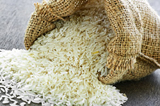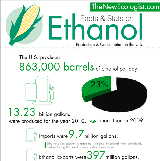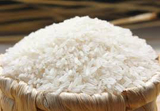Nutrition and diet
A comparitive evaluation of the antioxidant potential of organic rice and a commercial variety
Abstract
An evaluation of biochemical parameters to assess the quality of various food products is a part of the work taken up by the Photobionics team. This is an analysis of the rice grown and cultivated by the photobionic method.
Free radicals play a major role in tissue damage in all disease and antioxidants help our body to fight against them. This study compares the free radical scavenging activity (which is an indicator of antioxidant potential) of organic rice produced by the photobionic method to that of non-organic rice.
Aim
To compare the antioxidant activity of two samples of Rice using DPPH Radical scavenging method.
Introduction
The present study is carried out to quantify benefits, if any, in using organic rice. Free radicals such as hydroxyl radicals, super oxide, hydrogen peroxide, singlet oxygen are released during disease conditions and disturb the integrity of the cell membrane, finally leading to cell death. Natural antioxidant systems like super oxide dismutase and glutathione act to scavenge free radicals in the body. Deterioration of these systems during disease causes disease progression. Thus natural antioxidants available in foods could offer protection in slowing down the progression of a disease.
The DPPH Free Radical scavenging method is a popular method at quantifying the total antioxidant potential of a substance and is used in the present study.
Materials and methods
Chemicals
DPPH (2,2-diphenyl-1-picrylhydrazyl) procured from Sigma Aldrich.
Preparation of extracts
200gm each of organic rice and commercial rice varieties were taken and extracted with 500 ml of 99% ethanol using cold maceration technique for 48 hours. The extract is concentrated to 10ml and considered to be full strength. Dilutions from full strength extract were considered for the experiment.
Radical scavenging activity
DPPH method
DPPH is characterised as a stable free radical by virtue of the delocalisation of the spare electron over the molecule as a whole, so that the molecules do not dimerise, as would be the case with most other free radicals. The delocalisation also gives rise to a deep violet colour, characterised by an absorption band in ethanol solution centred at about 517 nm.
When a solution of DPPH is mixed with that of a substance that can donate a hydrogen atom, then this gives rise to the reduced form with the loss of this violet colour . Representing the DPPH radical by Z* and the donor molecule by AH, the primary reaction is Z*+ AH = ZH + A* where ZH is the reduced form and A* is the free radical produced in this first step.
This latter radical will then undergo further reactions which control the overall stoichiometry, that is, the number of molecules of DPPH reduced (decolorised) by one molecule of the reductant. The reduction of the violet colour by the etanolic extract of the sample was measured using UV spectroscopy and 517 nm. 2%, 4%, 6%, 8% and 10% of concentrated extracts were used for the study.
1ml of 0.002% DPPH was added to a mixture of 0.1ml of extract and 3.9 ml ethanol. The mixture was allowed to stand in the dark for 30 minutes and the absorbance was measured at 517nm.
Results
DPPH scavenging activity
Organic rice |
Commercial variety |
|||||
| Sl. No | Conc. of extract (%) |
Absorbance | % reduction of DPPH |
Conc. of extract (%) |
Absorbance | % reduction of DPPH |
| 1 | 2 |
0.075 |
86.5 |
2 |
0.079 |
85.8 |
| 2 | 4 |
0.073 |
86.9 |
4 |
0.088 |
84.2 |
| 3 | 6 |
0.062 |
88.8 |
6 |
0.081 |
85.4 |
| 4 | 8 |
0.061 |
89.0 |
8 |
0.080 |
85.6 |
| 5 | 10 |
0.038 |
93.2 |
10 |
0.075 |
86.5 |
Series 1: Organic rice
Series 2: Commercial rice
Discussion
From the above results the antioxidant potential by free radical scavenging could be compared between the organic rice sample and commercial rice. 2% of the full strength organic rice extract showed radical scavenging potential to that of 10% of full strength commercial rice. Thus ethanolic extract of organic rice showed 5 times the antioxidant potential of commercial rice extract.
Conclusion
Organic rice proved to have more radical scavenging potential than that of commercial rice. Thus it could be useful in preventing cell destruction in disease conditions.
Further research for evaluating the phyto-chemical constituents and antioxidant potential using other methods could be useful in supporting the present study.
Anil Kumar Sagi is an Assistant Professor at the Shri Vishnu College of Pharmacy, Bhimavaram, Andhra Pradesh, India.
Share with us (Comments, contributions, opinions)
When reproducing this feature, please credit NAMAH, and give the byline. Please send us cuttings.



